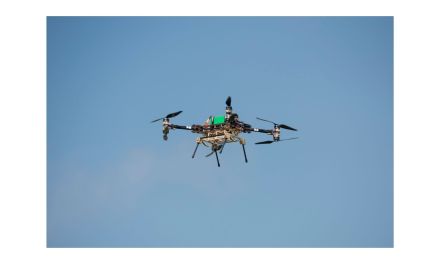Breakthroughs in artificial intelligence are continuously reshaping the way we tackle complex challenges, and a newly developed system is set to take these capabilities even further. Dr. Ilche Georgievski, Professor Marco Aiello and their team from the University of Stuttgart have introduced Scalable Hierarchical (SH) Planning System, a user-friendly, open-source system designed for step-by-step planning. Open-source means that the system’s code is freely available for anyone to use, modify, or improve. Their work, published in the peer-reviewed journal SoftwareX, highlights the importance of adaptability and efficiency in solving real-world planning problems using artificial intelligence. Peer-reviewed means that other experts in the field have evaluated the research to ensure its quality and reliability.
Creating effective plans with artificial intelligence can be challenging, but SH simplifies the process. The system is built to work across different fields, making it a flexible tool for addressing planning problems such as decision making, coordination, assistance, and control, generating step-by-step solutions, and easily connecting with other digital systems. Unlike older AI planning tools, SH uses a modular design, meaning users can adjust its features as needed. A modular design refers to a system made up of independent parts that can be replaced or upgraded without affecting the whole. “Our system offers a smart and flexible way to break down complex tasks into manageable steps while ensuring it integrates smoothly with other applications,” explained Dr. Georgievski. The system is built using the Scala programming language, a high-level programming language known for its efficiency in being expressive and modern, appealing to developers who value the combination of functional and object-oriented programming.
Expressiveness is one of the key strengths of SH. Unlike traditional planning tools with limited support for handling real-world needs, SH supports a wide range of planning problems due to its ability to represent various properties of these problems, such as logical, numeric, and temporal constraints. This capacity for expressiveness makes it particularly suited for handling complex, real-world domains. This makes it useful in a variety of settings, such as smart buildings, organizing cloud-based applications, which are programs that run on remote servers rather than on a personal computer, or helping self-driving vehicles navigate their surroundings. The researchers tested SH against other well-known planning tools and found that it performed better in terms of speed and memory usage. Memory usage refers to how efficiently a system processes and stores data. “By designing it as a service that can easily be connected to other systems, SH is more than just a standalone tool—it’s a valuable building block for larger artificial intelligence projects,” said Professor Aiello.
Ease of use is another major advantage of SH. The system works with a specially designed planning language, which is a structured way to describe problems so that computers can generate solutions. This makes it easier to define problems and find solutions. The structured way it processes information allows users to quickly convert abstract goals into actions. This design ensures that it can be applied to a broad range of planning problems, such as decision making, coordination, assistance, and control, from managing smart buildings, which use automated systems to control lighting, temperature, and security, to streamlining industrial operations, where machines and systems work together efficiently.
Developers have also ensured that SH is accessible to a wide range of users. The system exposes its functionalities as Web services, allowing other applications or systems to interact with SH over the internet by sending simple requests and receiving responses—for example, asking the planner to solve a specific planning problem. This means developers and researchers can quickly integrate it into their own projects without needing extensive technical knowledge. “Our aim was to create an artificial intelligence planning tool that is both powerful and easy to use in different situations,” said Dr. Georgievski. The system’s structured design makes it possible for users to modify and expand its functions to suit their specific needs.
Expanding beyond research settings, SH has the potential to improve many industries, including logistics, which involves the coordination of transportation and storage of goods, and robotics, which involves designing and using machines to perform tasks, as well as cloud-based services, which allow users to access computing resources over the internet. With its ability to handle complex planning tasks in a smart and efficient way, the system is expected to play a major role in the future of automated solutions, referring to systems that perform tasks with minimal human input. Because it is open-source, developers around the world can contribute to its improvement, helping to create even more advanced applications for artificial intelligence in the coming years.
Journal Reference
Georgievski I., Palghadmal A.V., Alnazer E., Aiello M. “SH: Service-oriented HTN Planning system for real-world domains.” SoftwareX, 2024; 27:101779. DOI: https://doi.org/10.1016/j.softx.2024.101779
About the Authors

Marco Aiello is a Professor of Computer Science and Head of the Service Computing Department at the University of Stuttgart, Germany. An elected member of the European Academy of Sciences and Arts, Global Affiliated Research Faculty at Chang Gung University, Taipei, Taiwan. He is vice-president of Informatics Europe. He holds a PhD in Logic from the University of Amsterdam, the Habilitation in Applied Informatics from TU Wien, and a master’s degree in Engineering from La Sapienza University of Rome. In 2016, together with three former Ph.D. students, he founded the company SustainableBuildings BV, acquired in 2020 by the Dutch energy company Innova BV. His research interests are in Service Computing, Smart Energy Systems, and Spatial Reasoning. He has authored over 200 peer-reviewed articles and several books, which have been cited more than 8.000 times.

Ilche Georgievski is a Privatdozent at the University of Stuttgart in Germany. Born and raised in Bitola, Macedonia, he began his academic journey at the University of Maribor in Slovenia, where he earned a master’s degree in Computer and Information Science. He went on to obtain his Ph.D. in Computer Science from the University of Groningen in the Netherlands in 2015, and continued there as a postdoctoral researcher until 2017. Between academic positions, he brought expertise to industry, working as CTO at Sustainable Buildings (2017-2018), where he gained hands-on experience in technology leadership. In 2025, he obtained his Habilitation in Computer Science at the University of Stuttgart. His primary research focuses on the art and science of AI planning systems and applications. His broader interests include automated service composition, smart energy systems, and learning algorithms from data.















































